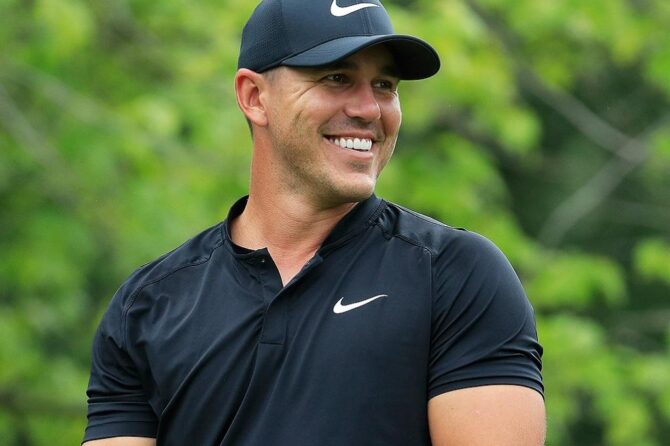Decoding the Golf Swing: Unveiling Biomechanical Marvels
Embarking on the journey of the golf swing unveils a realm of intricate movements that demand precision and coordination to achieve peak performance while mitigating injury risks. This insightful piece delves into the biomechanics of the golf swing, shedding light on the actions of vital muscle groups and the dynamic forces that shape each swing. By dissecting the harmonious interplay of these elements, golfers of all levels can glean valuable wisdom to enhance their skills and unlock their true potential.
Biomechanical Insight into the Golf Swing: A Thorough Review
Kinematics and Kinetics of the Golf Swing:
The golf swing encompasses four distinctive phases: the backswing, downswing, impact, and follow-through. As each phase unfolds, a symphony of body segments, muscles, and forces orchestrates the motion. During the backswing, energy is primed within the muscles as the golfer pivots away from their target. Transitioning into the downswing unleashes this stored energy, propelling the clubhead towards the ball. The impact phase witnesses the clubhead’s forceful contact with the ball, setting it on its flight path. the follow-through phase aids in dissipating residual energy to fine-tune shot direction.
Muscle Activation Dynamics in the Golf Swing:
An intricate examination of the golf swing’s biomechanics unveils a complex tapestry of muscle activation patterns. From the hamstrings and glutes powering hip extension to the core muscles stabilizing the spine and generating rotation, each muscle group plays a crucial role in the swing’s execution. As the swing progresses, the interplay of muscles like the quadriceps and calf muscles during the downswing and the latissimus dorsi and pectoralis major muscles at impact showcases the intricate synchronization required for a seamless swing.
Unveiling Common Swing Faults and Strategic Corrections:
- Over-the-Top Swing Correction:
– Emphasize a shallow backswing path
– Strengthen the latissimus dorsi and pectoralis major muscles
– Implement drills for controlled backswing movements
- Sway Correction:
– Maintain a stable stance for balance
– Strengthen core muscles for stability
– Practice weight distribution drills to refine swing movement
- Chicken Wing Correction:
– Maintain a stable elbow position
- Strengthen forearm and triceps muscles
– Engage in drills for proper elbow alignment
Major Muscle Groups’ Crucial Role in the Golf Swing:
The symphony of muscle engagement across the body is vital for a powerful and precise golf swing. Key muscle groups like the hamstrings and glutes, core muscles, and shoulder and arm muscles collaborate to generate power and control throughout the swing sequence. Understanding their functions and activation phases empowers golfers to enhance their swing mechanics and elevate their performance on the course.
Elevating Game Performance through Swing Mechanics Optimization:
Optimizing golf swing mechanics requires a meticulous assessment of one’s swing, aligning with the biomechanical principles discussed earlier. Focusing on segment sequencing, weight distribution, lower body engagement, and stable posture fosters a synchronized and powerful swing, resulting in enhanced performance, accuracy, and consistency.
Tackling Common Swing Faults Strategically:
Identifying common swing faults provides valuable insights into refining technique and enhancing performance. By addressing issues like the over-the-top swing and reverse pivot through targeted corrective strategies, golfers can hone their skills, prevent injuries, and chart a path towards mastery of the golf swing.
Unraveling Scientific Insights for Optimal Golf Swing Mastery:
Scientific analysis of the golf swing not only enlightens golfers on performance optimization but also unveils strategies to emulate top performers. By integrating scientific principles into training methods and studying elite swing patterns, golfers can enhance their gameplay, minimize errors, and reach new heights in their golfing prowess.
In the realm of golf, where precision and mastery intertwine, a profound understanding of biomechanics is the key to unlocking peak performance while safeguarding against injuries. This article serves as a compass, guiding golfers through the labyrinth of the golf swing’s complexities, empowering them to refine their techniques, conquer swing flaws, and elevate their gameplay to unprecedented levels.

Golf, often regarded as a game of finesse and precision, holds within its core a myriad of complexities, especially in the realm of the golf swing. Understanding the biomechanics that underpin this fundamental motion is not just a quest for knowledge but a pathway to unlocking one’s true potential on the greens. Let’s embark on a journey into the intricate world of golf biomechanics, exploring the nuances that drive performance optimization.
—
#### The Golf Swing Enigma
The golf swing, a symphony of movements that demands unparalleled coordination and finesse, is the cornerstone of a golfer’s performance on the course. From the initial setup to the graceful follow-through, each phase of the swing is a ballet of muscle actions and force interactions. Delving deeper into the biomechanics of this art form unveils the secrets to mastering the swing and achieving optimal results.
#### Decoding the Major Muscle Players
At the heart of the golf swing lie the major muscle groups that orchestrate the intricate dance of movement. The hamstrings and glutes power the swing’s backswing and downswing, stabilizing the core and generating rotational force. The core muscles, including the abdominals and back muscles, serve as the anchor for stability and power generation. The shoulders and arms, vital in club control and speed generation, maintain the swing’s fluidity and precision.
#### The Science Behind the Swing
An in-depth exploration into the biomechanical model of the golf swing reveals a fascinating interplay of kinematics and kinetics. Understanding the phases of the swing – backswing, downswing, impact, and follow-through – provides golfers with strategic insights into maximizing energy transfer, clubhead speed, and shot accuracy. By dissecting each phase’s intricacies, golfers can fine-tune their technique and elevate their performance on the course.
#### Addressing Common Swing Faults
In the pursuit of swing perfection, golfers often encounter common faults that hinder their performance. Issues like the over-the-top swing, sway, and chicken wing syndrome can plague even seasoned players. However, by identifying these faults early and implementing corrective measures such as drills, strengthening exercises, and posture adjustments, golfers can rectify their swing flaws and enhance their overall gameplay.
#### Optimizing Swing Mechanics for Performance Excellence
The optimization of swing mechanics is a critical aspect of honing one’s golfing skills. By focusing on body segment sequencing, weight distribution, and lower body engagement, golfers can unlock the full potential of their swing. Emphasizing a stable posture, proper timing, and coordinated movements among body segments can lead to increased power, accuracy, and consistency in each swing.
—
In the intricate tapestry of golf biomechanics lies the key to unlocking the full potential of your swing. By unraveling the secrets embedded within each movement and muscle activation, golfers can embark on a journey towards mastery and peak performance on the course. Embrace the challenge, delve into the depths of biomechanical understanding, and watch as your golf game reaches new heights of excellence.





